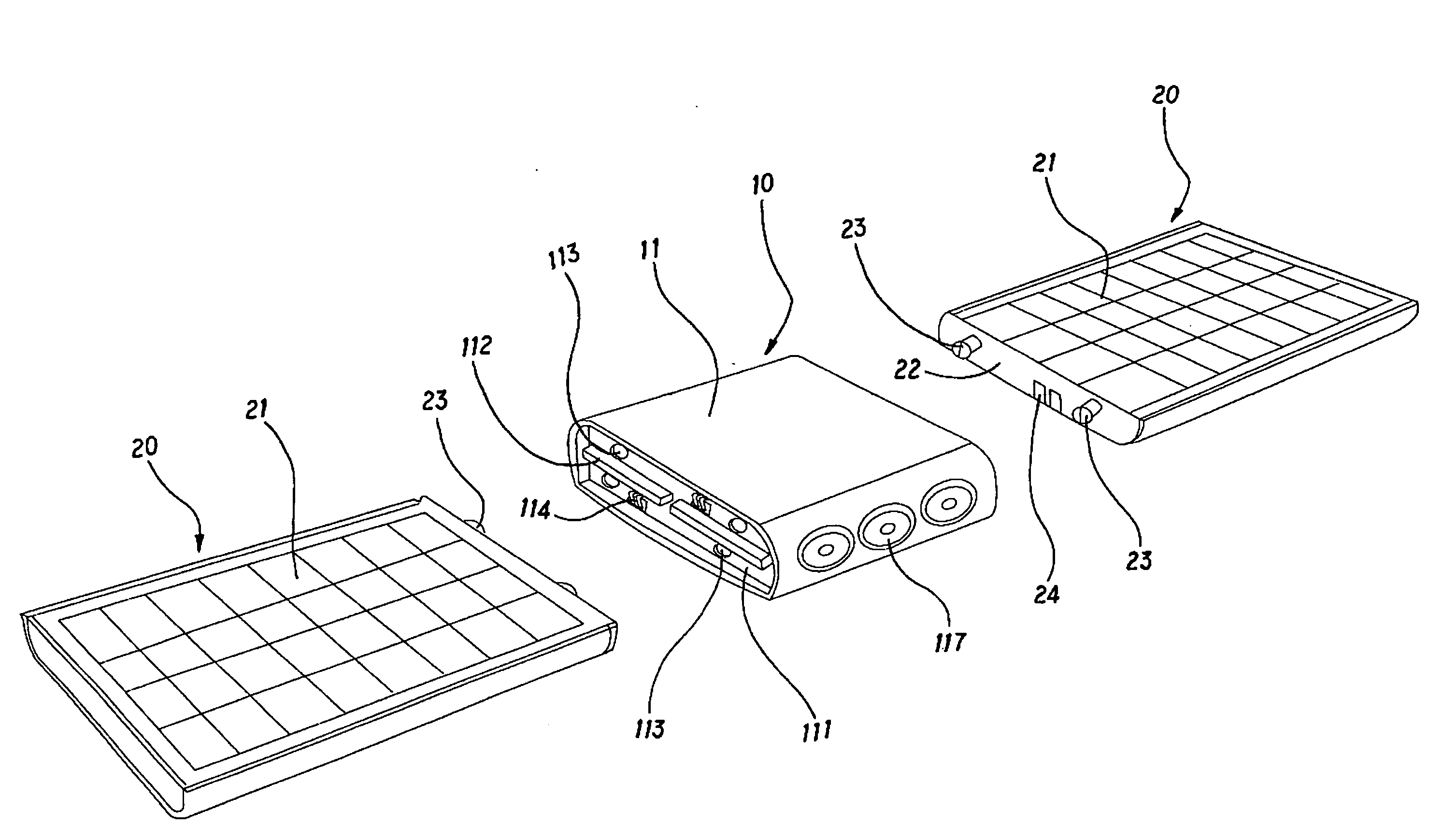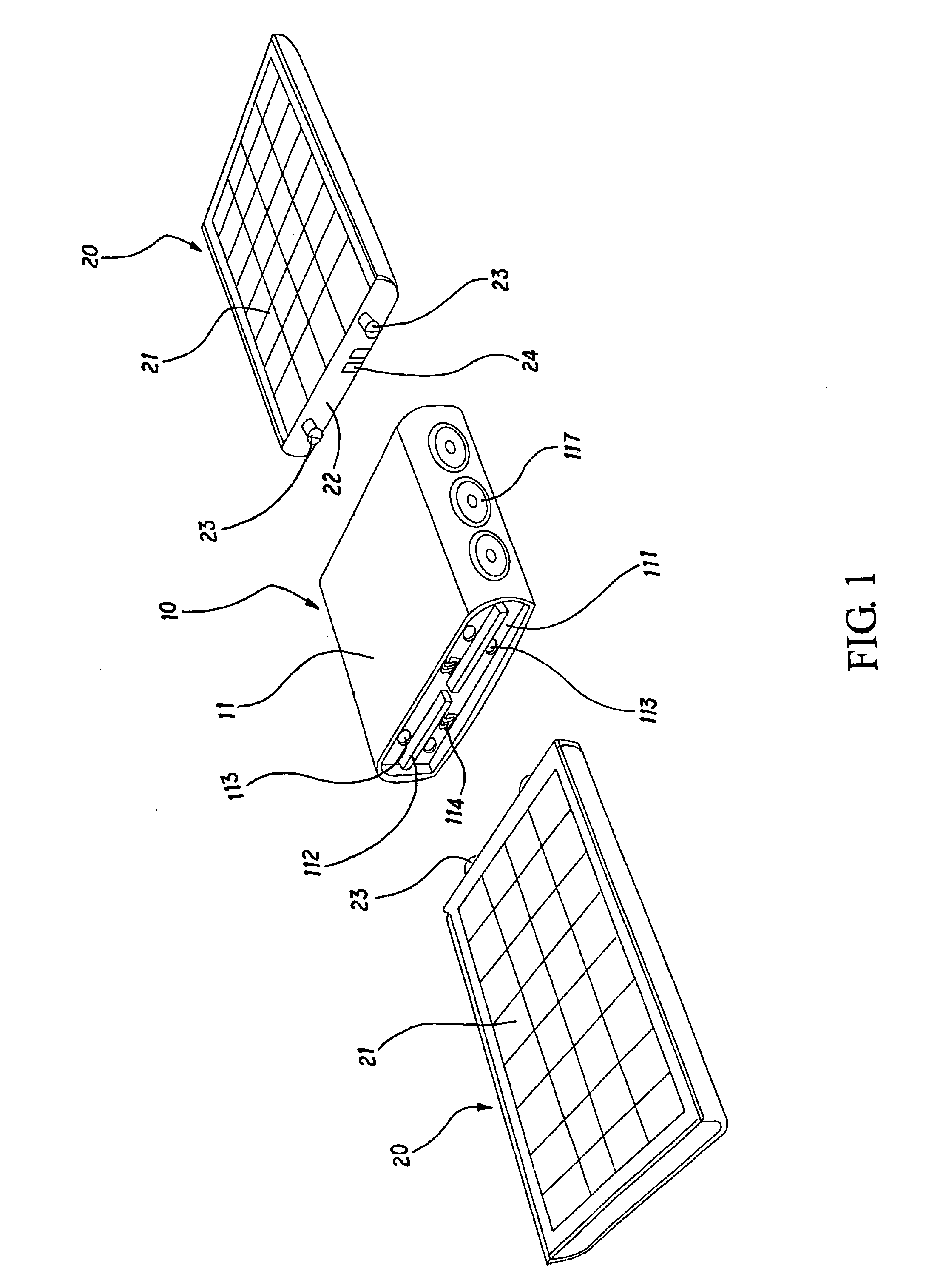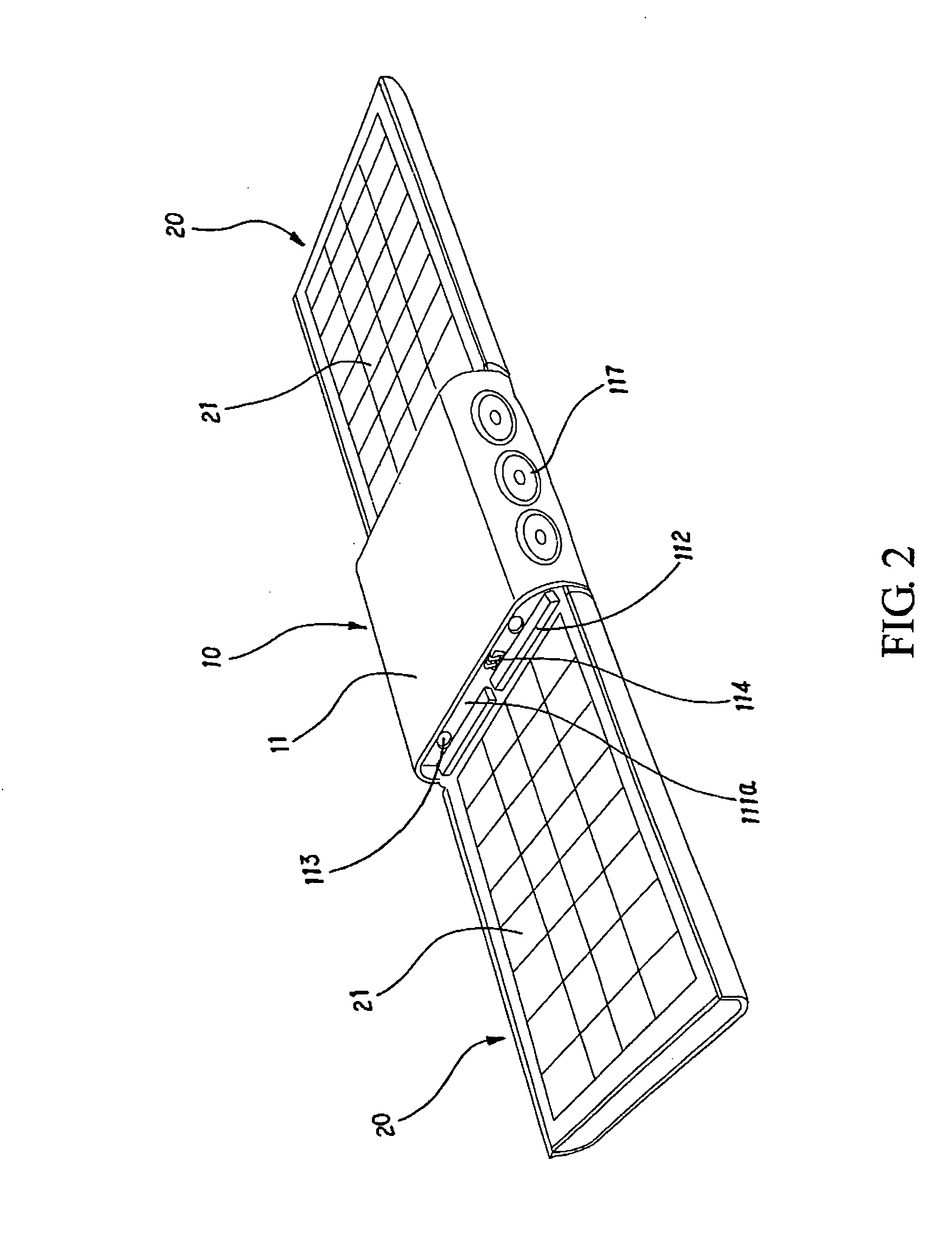Solar charger
a solar charger and charger body technology, applied in the field of solar chargers, can solve the problems of inability to charge electronic devices through traditional chargers, inability to solve problems such as inability to charge solar charging devices of the prior arts, and inability to recharge solar energy devices, etc., to save manufacturing and processing costs, reduce unnecessary waste, and reduce time consumption. effect of fabrication
- Summary
- Abstract
- Description
- Claims
- Application Information
AI Technical Summary
Benefits of technology
Problems solved by technology
Method used
Image
Examples
Embodiment Construction
[0017]Please refer to FIGS. 1 and 2 for one preferred embodiment of the solar charger of the present invention. The solar charger comprises a main body 10 and two solar panels 20, which will be further explained in detail through the following description.
[0018]The main body 10, referring also to FIGS. 5, 6 and 7, comprises a approximately rectangular housing 11. Inside the housing 11, a rechargeable battery 12 and a circuit board (not shown) are provided. A charging unit 13 and a discharging unit 14 are arranged on the circuit board and are respectively connected to the rechargeable battery 12, as shown in FIG. 7, for preventing the rechargeable battery 12 from being over charged or over discharged. Further, each of two opposite edges of the housing 11 has a depressed portion 111, and two partitions 112 are transversely positioned in a middle part of the depressed portion 111 and distant from each other with a proper distance so that the depressed portion 111 is divided into a firs...
PUM
 Login to View More
Login to View More Abstract
Description
Claims
Application Information
 Login to View More
Login to View More - R&D
- Intellectual Property
- Life Sciences
- Materials
- Tech Scout
- Unparalleled Data Quality
- Higher Quality Content
- 60% Fewer Hallucinations
Browse by: Latest US Patents, China's latest patents, Technical Efficacy Thesaurus, Application Domain, Technology Topic, Popular Technical Reports.
© 2025 PatSnap. All rights reserved.Legal|Privacy policy|Modern Slavery Act Transparency Statement|Sitemap|About US| Contact US: help@patsnap.com



